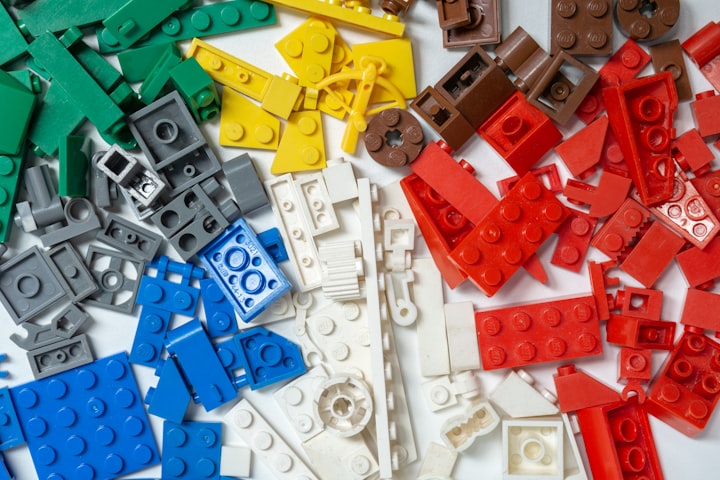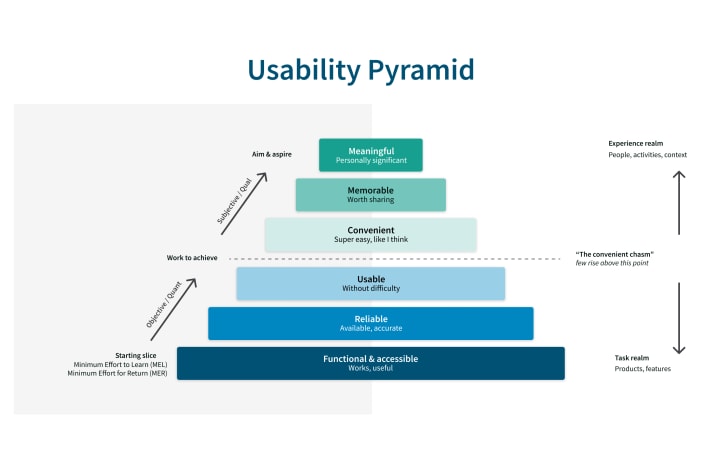Differences in design
UI, UX, PD, what gives?

Two of the most frequent points of confusion I face in Product are folks not understanding Product Design and how it differs from other types of design and folks not understanding Product Management and how it differs from Product Owner (in the Agile sense) and Project Management. Today, I'll chat a bit about the design side of things.
In my opinion, the term "design" doesn't do us any favours when it comes to Product Design. People across organizations, let alone the Product and Engineering teams product designers need to work with most frequently, don't understand what it is we do and have existing biases about how design is supposed to work. Many folks have invented different models of organizational "design maturity" to help articulate part of this problem. Something I find that helps is simply outlining the differences between some of the more common design-related roles in an organization.
Graphic, Visual and UI (User Interface) based designers
- These folks often received education in the form of graphic design, visual communication, or media arts and related field training.
- These folks generally receive a problem through a brief, specifications, or stakeholders.
- They are mostly focused on providing outputs in the form of visual assets: things like logos, branding, layouts, and illustrations.
- They operate mostly in design software and tools.
- Their iterations are driven by feedback from their client.
- Their projects generally have defined scope and deliverables.
- Their outputs are focused on delivering value for a client. Oftentimes, this is based on subjective opinion (although we can test a visual design's effectiveness).
- Although more successful folks will communicate frequently, it's common to focus a big part of what they do on delight and to do a big reveal. It can also be common to silo until that reveal is made.
UX (User Experience) Design, HCI (Human Computer Interface) Design, and Interaction Design
- These folks often received education in the form of user experience, human-computer interaction, behavioural psychology, behavioural design, and related field training.
- These folks might receive a problem to investigate but otherwise discover problems, risks, needs, and opportunities themselves through customer research into things like customer behaviour, needs, and pain points. They feed the team with what they discover.
- Their deliverables often take the form of (but are not limited to) empathy-building items like flows and maps, research and documentation, or interaction assets that help teams understand how a full interaction or flow could work, like wireframes and prototypes.
- They can spend a lot of their time in design software when they need to provide assets that articulate interactions and flows, but they might not spend all of their time there either. They could skew more toward research, spending a lot of their time with customers or data and outputting insights and analysis.
- Their iterations are based primarily on new usability and customer data. They seek objective information to make evidence-based decisions.
- It is common for them to uncover problems and scope as they go, proposing additional slices of work to follow in the future.
- Their work is much more customer-outcome-focused than business-focused. Although they still need to make sure the solutions they explore align with strategic business objectives, their focus is much more skewed toward servicing the customer's goals than the business and providing insights related to the customer.
- The outcomes they chase prioritize functional-first, not delight. Delight is something to work toward and aspire to after functional, accessible, and other usability-related problems are taken care of first and foremost.
Product Design and Product Experience
- These folks often received education in the form of user experience, human-computer interaction, behavioural psychology, behavioural design, visual communication, writing, business, and related field training.
- These folks are generally more involved in helping uncover problems, risks, unmet needs, and other opportunities than it is common for them to receive a problem. They do this through customer and market research, aligning what they discover with strategic business objectives, and proposing new products, features, or iterations.
- These folks provide empathy-based assets similar to UX folks, but they also provide business-based assets and help translate and connect the value between the two. Additional business-based assets might include service blueprints, value proposition design, business canvases, metrics and data analysis, and more.
- These folks' work can involve design software or not. I have seen incredibly valuable product designers spend very little time in design software or providing visual-based assets. They often spend a lot of time in more research and collaboration software and spaces because of the insights they need to collect or the value they need to help translate.
- Product Design folks iterate based on customer insights, but also business insights, stakeholder feedback, and through the lens of alignment with strategic business goals. They seek objective information to make evidence-based decisions. These folks are allergic to subjective opinions, always seeking competence instead of confidence.
- Product Design folks often discover new risks, problems, unmet needs, and opportunities and, therefore, pitch new scope. They feed teams and organizational intelligence, and like Product Managers and Product Marketing Managers, they can often influence strategy because of this.
- These folks are not focused on outputs but rather on outcomes. Those outcomes are generally balanced between the customer and the business.
- We've seen a shift in the industry towards product designers because of the holistic nature of the work between customer and business. There's a balance. The collaborative nature of the way product designers often work has also been helping push the empowerment of teams, and their focus on pushing outcomes instead of outputs.
- A good product designer helps keep us away from seeking revenue without providing customer value (enshittification), and away from pure customer value without business value (social utopia but also chaos and bankruptcy). They build that customer empathy, but they also have a mind for business.
The Usability Pyramid
I also like to highlight the difference between some of these roles utilizing the usability pyramid, which you may or may not have seen a form of before. If you look at this image, UX and Product Design folks generally aim for the bottom of this pyramid and work their way upward. Meanwhile, Visual and Graphic Designers are more likely to start at the top and work their way down.

The right role is based on context
What you need for different problems in your org is going to be based on context. A lot of Marketing teams have graphic and visual designers, but they might also have UX designers, too. Similarly, most Product teams have product designers, but they may also have specialists for certain types of tasks, like visual designers working on iconography and illustration. The key is knowing what you need and when and how to best utilize the folks in these roles.
About the Creator
Spencer Goldade
eMBA, UXCert, BDes, WebCert, CGD, CSPO
Director of Product Experience @ ZayZoon.
Vegetarian, cat-dad, friend to animals (except wasps). Very picky about waffles.
Leading teams in product, making games and writing fiction.






Comments
There are no comments for this story
Be the first to respond and start the conversation.